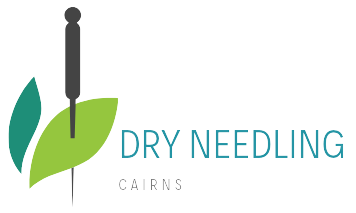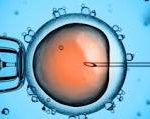We can set up a time to talk about your fertility concerns via email or text message.
Acupuncture for fertility Cairns – we can use Acupuncture for improving your fertility in Cairns. Acupuncture may also be able to help if you are willing to try Acupunctur e alongside IVF. Acupuncture works by balancing your menstrual cycle and helping to tonify things that are missing from your body. It may also help with increasing the warmth of your womb so that you are more fertile when it matters – especially after ovulation when the fertilized egg is trying to flourish and then implant. Acupuncture is very useful in preparing the thickness or your endometrial lining. It can also help with egg quality and the uniform growth of follicles. It also may be able to help you to grow more follicles during an IVF cycle.
Make an appointment today –
If you would like to check our available appointment times or make a booking please click on this link http://cairns-massage-cairns-acupuncture.au1.cliniko.com/bookings
or click on this link https://dryneedlingcairns.com.au and go to book online button.
or you can click the book online button on the www.cairnsmassage.net.au website.
or send a text to 0408 054 538.
Acupuncture for fertility Cairns
Step-by-step through an IVF cycle
An IVF ‘cycle’ is how we describe one round of IVF treatment starting with the first day of your period.
As part of your fertility plan, you may start medication or injections before the first day of the cycle.
Step 1: Day 1 of your period
The first official day of your IVF treatment cycle is day 1 of your period. Everyone’s body is different, and your fertility nurse will help you understand how to identify day 1.
Step 2: Stimulating your ovaries
The stimulation phase starts from day 1. In a natural monthly cycle, your ovaries normally produce 1 egg. You’ll take medication for 8-14 days to encourage the follicles in your ovaries (where the eggs live) to produce more eggs.
Your specialist prescribes medication specific to your body and treatment plan. It’s usually in the form of injections, which can vary from 1-2 for the cycle, or 1-2 per day. It can be daunting, but your fertility nurse will be there to show you exactly how and where to give the injections. You can get your partner involved too and watch and learn together to get it right. It quickly becomes a habit and you’ll be an expert in no time.
The most common hormones in the medications used to stimulate the follicles are:
- follicle-stimulating hormone (FSH)
- luteinizing hormone (LH).
Acupuncture for fertility Cairns
Both hormones are produced naturally in the body. The eggs are already there; the medication boosts the natural levels to encourage more eggs to develop.
We keep an eye on your ovaries and how the follicles are developing with blood tests and ultrasounds. Your medication will be adjusted if needed. You will have some transvaginal ultrasounds (a probe is inserted internally). Our team will support you through these processes and make you as comfortable as we can.
We’ll track you more frequently towards the end of the stimulation phase to time the ‘trigger injection’ perfectly.
The trigger injection gets the eggs ready for ovulation – the natural process where eggs are released and you have your period. Your fertility nurse tells you exactly when to do the trigger injection. Your fertility specialist will schedule the egg retrieval before you ovulate.
Step 3: Egg retrieval
Egg retrieval, or egg ‘pick up’, is a hospital day procedure where the eggs are collected from your ovaries. An anaesthetist will get you ready for a general anaesthetic. You’ll be asleep and the procedure takes about 20-30 minutes.
Your fertility specialist uses the latest ultrasound technology to guide a needle into each ovary. It’s delicate work where every millimetre counts, and this is where the experience of our specialists pays off. You can’t see an egg with the naked eye; they’re contained in the fluid within the follicles in your ovaries. The specialist removes fluid from the follicles that look like they’ve grown enough to have an egg inside.
Your fertility specialist should have a fair idea from your ultrasounds how many eggs there are before retrieval. The average number of eggs collected is 8-15.
Recovery takes about 30 minutes and you’ll be able to walk out on your own. It’s a good idea to have a support person with you as you won’t be able to drive after the procedure.
Step 4: The sperm
If you’re a couple planning on using fresh sperm, the male will produce a sample the morning of the egg retrieval. If you are using frozen or donor sperm, our scientists will have it ready in the lab.
The sperm is graded using 4 different levels of quality. It’s washed in a special mixture to slow it down so our scientists can spot the best ones under the microscope. A perfect, healthy sperm is not too fat or thin, with a tail that’s not too long or short. The best sperm are selected, and they’re ready and waiting in the lab to be introduced to the eggs.
Cairns fertility clinic / Cairns fertility clinic / Cairns fertility clinic / Cairns fertility clin ic / Cairns fertility clinic / Cairns fertility clinic
Step 5: Fertilisation
Your fertility specialist gives our scientists the eggs they have retrieved, still in the fluid from the follicles of the ovaries. The scientists use powerful microscopes to find the eggs in the fluid so they can be removed.
It’s important the eggs are fertilised quickly. The eggs and some sperm are placed in a dish. They have the chance to find each other and fertilise like they would naturally within your body.
Step 6: Embryo development
If the sperm fertilises the egg, it becomes an embryo. Our scientists put the embryo into a special incubator where the conditions for growth and development are perfect.
We create the perfect growing conditions using a mix of amino acids, just like your body would use to nurture the embryo.
Our scientists keep an eye on the embryos over 5-6 days. What we want is:
- a two- to four-cell embryo on day 2 and a six- to eight-cell embryo on day 3 (called the cleavage stage)
We know implanting embryos at the blastocyst stage into the uterus boosts your chances of a successful pregnancy.
Unfortunately, not all eggs will fertilise and reach embryo stage. The eggs might not be mature or the sperm not be strong enough. We know you’ll be waiting on news, so we’ll keep you up to date with the progress of your egg, sperm and embryo development.
Stage 7: Embryo transfer
If your embryo develops in the lab, you’re ready for it to be transferred into your uterus.
Your fertility nurses will explain the process. You’ll need to drink water before the transfer so you have a full bladder. We use ultrasound technology to get the embryo in the perfect spot, and it helps to see the lining of the uterus.
The embryo transfer is a very simple process, like a pap smear. It takes about 5 minutes, you’ll be awake, there’s no anaesthetic, and you can get up straight away. You can continue with your day, the embryo can’t fall out if you stand up or go to the toilet.
A scientist talks to you about your embryo prepares it by placing it in a catheter. Its critical this is done by an expert to disturb the embryo as little as possible.
Your fertility specialist places the catheter through your cervix and into your uterus. They use ultrasound guidance to pinpoint exactly where to place the embryo. An embryo is only 0.1 millimetre, and the specialist has a target area of approximately 1 millimetre to play with. If it’s placed in the wrong spot, the embryo may not ‘stick’ and there is risk it’ll find a home outside the uterus.
Cairns fertility clinic / Cairns fertility clinic / Cairns fertility clinic / Cairns fertility clinic / Cairns fertility clinic
Acupuncture for fertility Cairns
It’s common practice at Monash IVF to transfer one embryo at a time. Other embryos are frozen using our advanced technology, to use in future treatment.
Step 8: The final blood test
Two weeks after your embryo transfer, you’ll have a blood test to measure your levels of the hormone hCG (human chorionic gonadotropin). hCG in your bloodstream usually means a positive pregnancy test.
The time between the embryo transfer and the blood test is often called the ‘two week wait’ (2WW). It can be tough not to be anxious about the result. If you need some help to cope or someone to talk to, our counsellors are ready to help you.
Acupuncture for fertility Cairns



